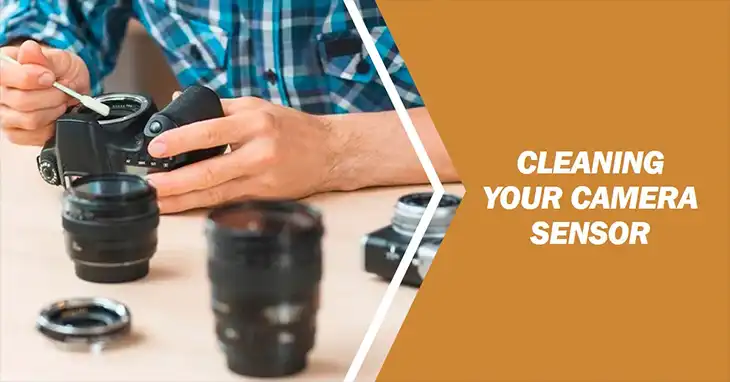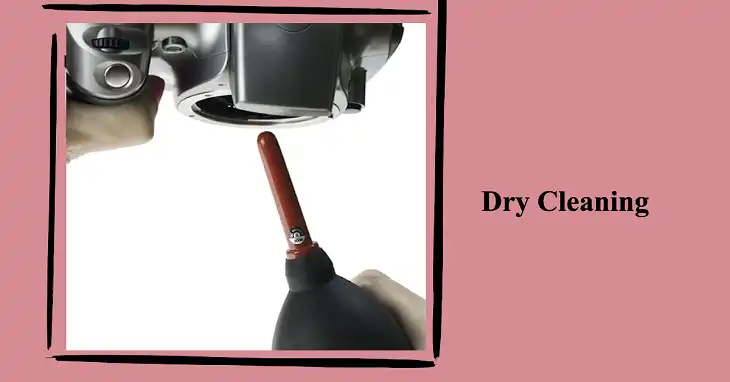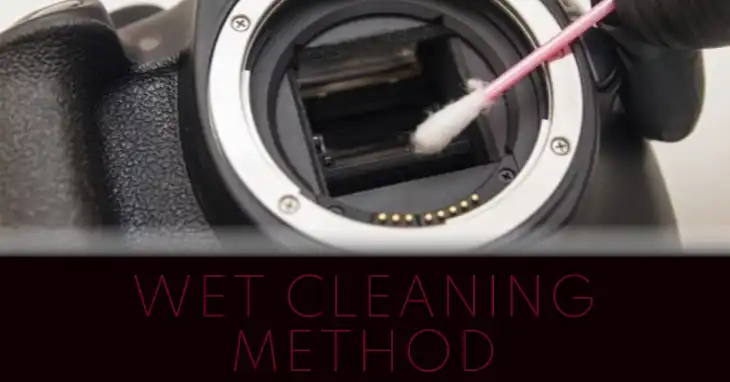A clean camera sensor is crucial for capturing sharp, high-quality images. Even a tiny speck of dust on the sensor can leave unsightly spots or blemishes in your photos. While professional sensor cleaning services are recommended for thorough cleaning, there may be times when you need to address light dust buildup without a dedicated cleaning kit.
Attempting to clean your camera sensor without proper tools and knowledge carries risks. You could potentially cause permanent damage to the delicate sensor or internal components. This guide should only be followed if you have light dust accumulation and cannot access professional cleaning services immediately.
With that being said, let’s now take a look at how to clean your camera sensor when you don’t have a cleaning kit but cleanup is absolutely necessary.

How to Prepare Your Camera for Sensor Cleaning
Before you begin, it’s essential to set up a clean, dust-free workspace. A bathroom immediately after a hot shower is an ideal environment, as the steam and humidity help settle airborne particles.
Next, prepare your camera for cleaning:
- Turn off the camera and remove the battery.
- Carefully remove the lens, and store it facing down on a clean surface to prevent dust from entering.
- For DSLRs, access the sensor by enabling the “mirror lockup” mode, which will keep the mirror out of the way.
- For mirrorless cameras, the sensor is already exposed once the lens is removed.
Since you don’t have a dedicated cleaning kit, you’ll need to gather some safe alternatives. Use these at your own risk, as they are not designed specifically for sensor cleaning:
- Air blower (a rocket blower is recommended; never use compressed air, as it can introduce moisture and propellants)
- Cotton swabs (new, lint-free, for dry cleaning only)
- Distilled water (for wet cleaning, with extreme caution)
Dry Cleaning Method to Clean Your Camera Sensor

Always start with dry cleaning methods before attempting wet cleaning. Dry cleaning is safer and less likely to cause damage if done correctly.
Using a rocket blower:
- Hold the camera sensor-side down, and give the sensor a few short bursts of air from the blower.
- Approach the sensor from different angles to dislodge any stubborn dust particles.
- Use a magnifying loupe or live view (if available) to inspect the sensor for any remaining dust.
If dry cleaning alone doesn’t remove all the dust, you may need to proceed with wet cleaning for stubborn dirt. However, wet cleaning carries a higher risk and should be attempted with extreme caution.
Wet Cleaning Method for Camera Sensor Cleaning
Wet cleaning should only be attempted if dry cleaning methods have failed to remove all the dust. It’s a more risky process and can potentially cause permanent damage to your sensor if not done correctly.

Materials needed:
- Distilled water (avoid tap water, as it may contain minerals that can leave residue)
- Sensor swabs (designed specifically for cleaning camera sensors)
Preparing the cleaning solution:
- Dampen a fresh sensor swab with a minimal amount of distilled water. Too much moisture can seep into the camera and cause damage.
- Gently squeeze out any excess water from the swab.
Swabbing technique:
- With the camera sensor-side down, gently swab the sensor in a single, straight motion. Do not swab back and forth, as this can spread the dirt around.
- Use a fresh, damp swab for each pass over the sensor.
- Repeat the process with new swabs until the sensor appears clean.
After wet cleaning, it’s crucial to allow ample drying time before reassembling the camera. Leave the camera in a dry, dust-free environment for at least 24 hours to ensure no moisture remains on the sensor.
How to Reassemble the Camera
Once the sensor is dry, carefully inspect it one last time for any remaining dust or debris. Use a magnifying loupe or live view to get a closer look.
If the sensor appears clean, you can reassemble the camera:
- Reattach the lens securely, ensuring it clicks into place.
- Reinstall the battery and turn on the camera.
- Take a few test shots to ensure everything is functioning correctly.
Post-Cleaning Care
To maintain a clean sensor, it’s essential to store your camera properly and minimize dust exposure during lens changes:
- Always store your camera with a lens attached to prevent dust from entering the body.
- When changing lenses, do so in a clean environment and keep the camera sensor-side down to let gravity work in your favor.
- Use a rocket blower to remove any dust from the lens mount before attaching a new lens.
Sum Up
Cleaning your camera sensor without a dedicated kit is a delicate process that carries risks. Always prioritize safety and proceed with caution, especially when attempting wet cleaning methods.
Remember, a clean sensor is essential for capturing sharp, blemish-free images. While the methods outlined in this guide can provide a temporary solution in emergencies, investing in a proper sensor cleaning kit is highly recommended for regular maintenance and to avoid potential damage to your camera.
Frequently Asked Questions
Can I use compressed air to clean my camera sensor?
No, compressed air cans should never be used for sensor cleaning. The propellants and moisture in compressed air can potentially damage the sensor or introduce new contaminants.
Is it safe to use a microfiber cloth for sensor cleaning?
No, microfiber cloths are not recommended for sensor cleaning. They can easily scratch or leave behind lint and fibers on the delicate sensor surface.
How often should I clean my camera sensor?
The frequency of sensor cleaning depends on your shooting environment and how often you change lenses. As a general rule, it’s a good idea to inspect and clean your sensor every few months or after extended use in dusty conditions.
Can I use isopropyl alcohol instead of distilled water for wet cleaning?
While isopropyl alcohol can be used for sensor cleaning, it’s not recommended unless you have a dedicated sensor cleaning kit designed for alcohol-based solutions. Using alcohol improperly can damage the sensor’s coatings or leave a residue.
What should I do if I accidentally touch the sensor during cleaning?
If you accidentally touch the sensor with your fingers or a cleaning tool, stop immediately and seek professional assistance. Oils and contaminants from your skin can be challenging to remove and may require a more thorough cleaning by a professional.
